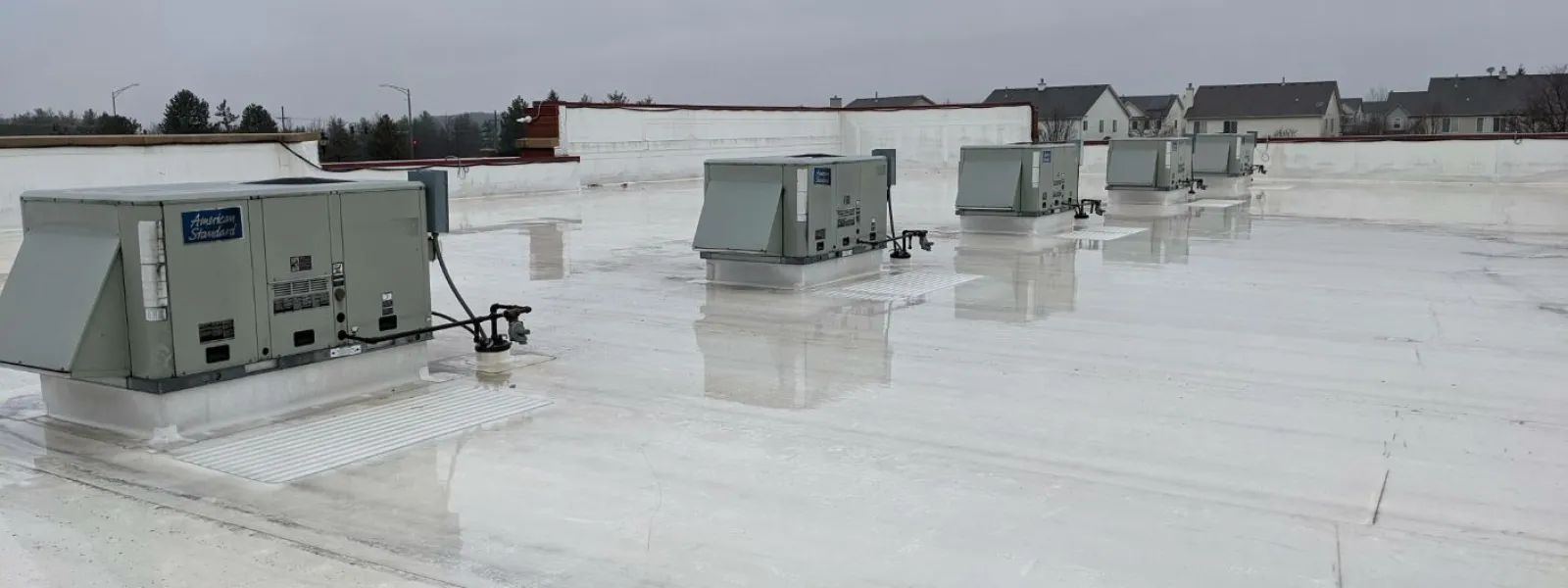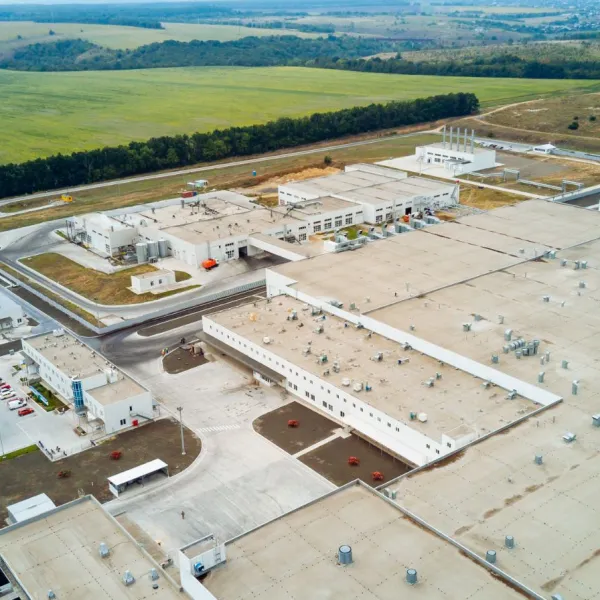
Commercial Roofing Systems

Professionally Installed Commercial Roofing Systems
There is good news and bad news about commercial roofing. First, the good: Today there's an amazing selection of commercial roofing materials and techniques available, providing building owners with excellent options for commercial roof replacement, reroofing, and new roof installation.
The bad news is that this variety of commercial roofing options can make it very difficult to select the right roofing treatment for your commercial building. Adding to the confusion are the different acronyms used to describe various roofing types: SPF, TPO, EPDM, etc. However, there's no need to worry. If you want to make sure you've got the right type of commercial roofing, you've come to the right place. ARAC Roof It Forward will help you select a roofing or reroofing treatment that suits your building and your budget.
If you are in need of commercial roof repair, replacement or new roof installation, contact us to schedule a free estimate today!
We are experienced in many types, techniques, and materials for roofing
Commercial roofing is sometimes described by the type of roof on the building: low slope, shed, and steep slope, for example. In other cases, roofing is described by the installation technique - such as "built-up roofing," "standing-seam roofing," "single-membrane roofing" and "torch-down roofing." More frequently, roofing is described simply by the material that's being installed. Here are brief descriptions of the main commercial roofing materials being used today:
- Metal roofing includes factory-made panels and flashing profiles, as well as roofing panels that are cut and formed at the building site. When installed on a sloped roof, metal roofing offers the benefits of energy efficiency (lower heat gain during warm, sunny weather) and low maintenance.
- Coatings The primary benefit of commercial roof coating systems is that they are an extremely cost-effective alternative to a roof replacement. It can assist you in getting the most out of your roof without having to replace it.
- EPDM roofing is sometimes referred to as “rubber roofing” because this roofing membrane material (technically known as ethylene propylene diene monomer) is black and flexible like a rubber inner tube. EPDM roofing can be installed on flat and low-slope roofs. Seams between adjacent EPDM sheets and metal flashing elements are typically sealed with special adhesive.
- TPO (Thermoplastic Polyolefin) roofing is a single-membrane system, just like EPDM roofing. Installed in large rolls, TPO can be installed with mechanical fasteners or by fusing seams with heat. The white TPO material used most often does a good job of reflecting solar radiation, which helps to reduce the demand for air conditioning in hot weather.
- Modified bitumen roofing is applied in rolls that are usually heated with a torch to seal seams and adhere the asphaltic material to the substrate and to flashing details. The popularity of more modern single-membrane systems (EPDM & TPO) has reduced the demand for modified bitumen roofing.
- Asphalt shingle roofing will always be popular. Plenty of commercial buildings with sloped roofs depend on asphalt shingles for weather protection. This roofing option is among the most affordable and gives building owners many shingle styles and colors to choose from.